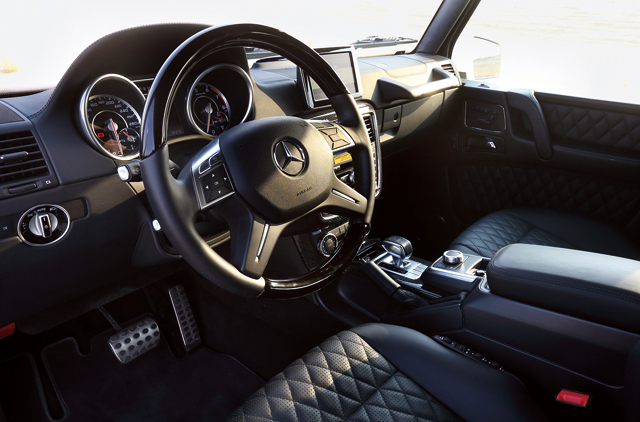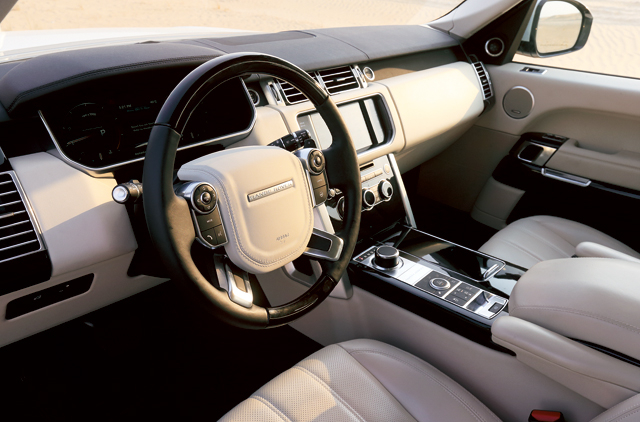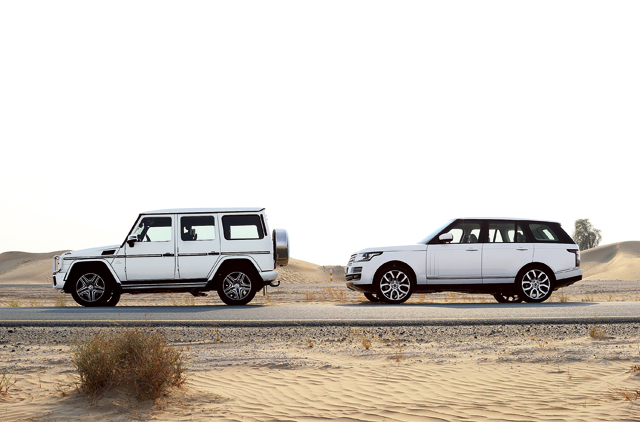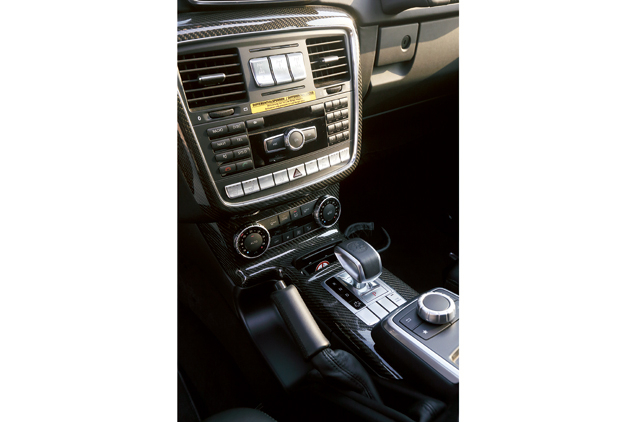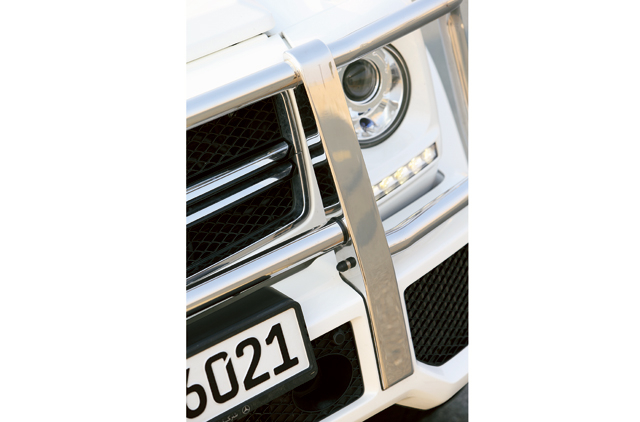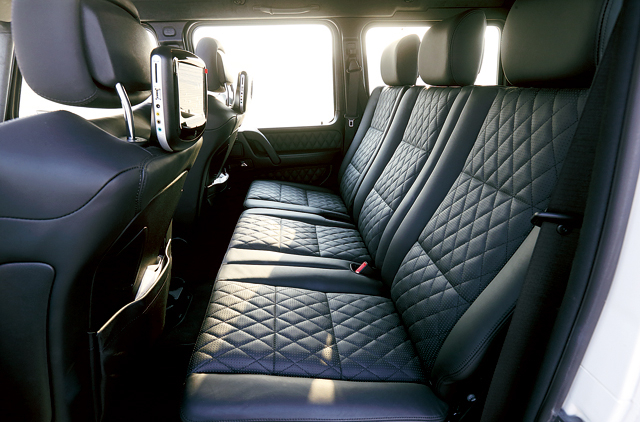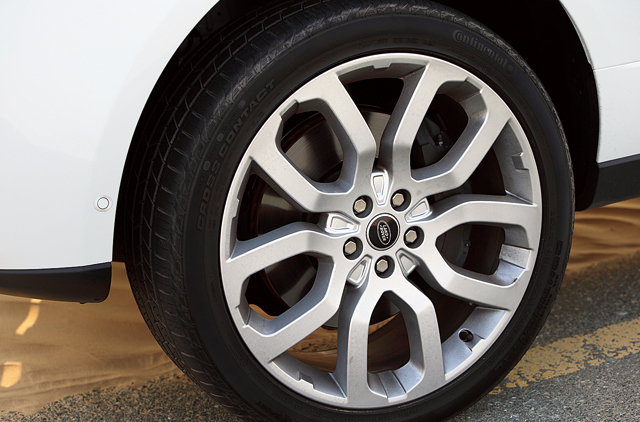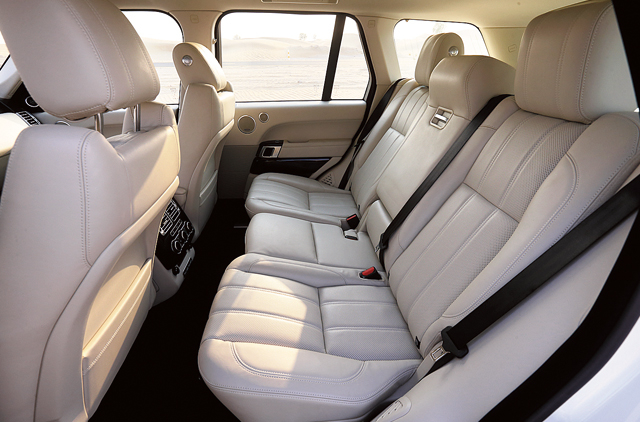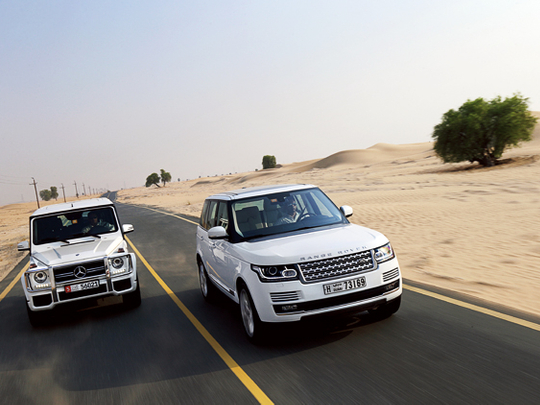
More than a century-and-a-half ago, when Charles Darwin proposed his theory of evolution suggesting complex creatures evolve over time from their simpler, cruder ancestors, he had only living beings in mind. But had he been living in the last century, Darwin would’ve been amazed to see how his theory applied so seamlessly to the petrol-blooded, four-wheeled species. Well, most of them.
There’s one automobile that has stood in flagrant defiance of this phenomenon; the venerable Mercedes Geländewagen, the undisputed emperor of the wilderness that has managed to remain pretty much the same in the 34 years since it was born as a boxy military vehicle.
The only other machine that’s ever come close to challenging the G-Wagen’s supremacy off-road and its commanding presence on it is the equally iconic Range Rover, which in contrast has now evolved into a sophisticated and contemporary being, while still keeping the DNA of the original intact.
What better way, then, to welcome this fourth-generation Land Rover flagship
to the Middle East than letting it loose with the G-Class?
With its right-angled lines harking back to their original pre-historic design, the
G 63 looks like it accidentally wandered in through a wormhole from the Cretaceous period. That also means there is nothing else like it on the road, which adds to its matchless appeal.
The AMG version you see here can be distinguished from lesser models by its distinctive radiator grille and front bumper with large air dams, flared wheel arches, stainless steel running boards, a side-exit sports exhaust system and huge 20in alloys.
The architecture and the suspension set-up of the G 63 are as old-school as its looks suggest. It’s a body-on-frame truck with solid front and rear axles and three locking differentials for the front, centre and the rear, making the leviathan feel at home even in the most gruelling terrain. But let not the G-Wagen’s tough and antiquated appearance fool you into dismissing it as a motorised relic. It’s far from it.
Under the bonnet is a thoroughly modern twin-turbocharged 5.5-litre V8 fettled by the guys at Merc’s Affalterbach skunk works. Thanks to 544bhp and 760Nm of torque fed to all four wheels by a smooth-shifting seven-speed automatic, this 2.5-tonne rectilinear monstrosity is hurtled to 100kph in a scary 5.4 seconds. Although it goes like stink, the sheer bulk of the G-Wagen also makes it one of the worst handling SUVs out there. Carving corners at high speeds is not something you’d want to do in the G 63 — that would be met with frightening body roll and some serious understeer.
Awesome threesome: Range Rover, Porsche Cayenne Turbo and Mercedes-Benz ML 63 AMG
Volkswagen Cross Blue concept driven
2014 GMC Sierra tested in the UAE
But what else can you expect from a car that retains a structure that was originally designed to handle less than 200bhp? Although power-assisted, the archaic recirculating-ball steering is vague and unresponsive and will give you a proper workout on any road that’s not dead straight. But in a straight line, the G 63’s ride is surprisingly compliant and refined despite its rigid axle set-up. It also offers Comfort, Sport and Manual settings on the centre console that help alter gear shifts and suspension settings as you wish.
More signs of refinement await you as you climb up inside the G and the doors shut with a solid, reassuring thump. As opposed to its agricultural looks from the outside, the G 63 is anything but austere on the inside. The cabin features all the luxury trappings you’d expect in a carriage of this stature with a generous amount of diamond-stitched leather covering most of the surfaces you’re likely to come in contact with, a refreshed dashboard and centre console as well as an impressive level of standard equipment. The best bit though is the dominant seating position that offers commanding views of the road ahead for that, “I’m the ruler of all I survey” kind of feeling. In fact, that feeling goes a long way in contributing to the G’s charm as a prestige wagon.
The Range Rover is probably the only other car that affords the same sense of supremacy, but it’s a drastically different offering compared to the G-Wagen’s ladder frame, solid axle chassis. It is a radical departure from its own predecessors. Land Rover was able to shed hundreds of kilograms from its fourth-generation Range Rover, which is the world’s first SUV with an all-aluminium unibody. Figures of around 400kg have been bandied about; the equivalent of four European passengers or, um, two Americans. Apart from better fuel economy, a lighter car should mean sharper handling and a quicker 0-100kph sprint.
Hopping into the new Rangey, one can absolutely feel the difference. It isn’t just lighter, but stiffer too, which adds to the joy of blasting the boxy icon around any surface. And when it’s not dispatching challenging terrain, it’s dispatching those too important to travel by regular means, at a swanky part of town. No wonder the Middle East loves the Range Rover and has adopted it as its very own. Indeed, the three things that you see when you step off the plane in the region are sun, sand and white Range Rovers.
Although not to the extent of the G-Wagen, the Range Rover has also retained all the elements that made it a legend; the commanding driving position, squared-off front corners, clamshell bonnet and the fetching side gills. However, Gerry McGovern — design director and chief creative officer — obviously didn’t sharpen his pencil when he went to work on redesigning it because instead of the hard edges we’ve grown to love, the new model is a touch softer. It doesn’t quite have the same impact as the previous model or the Merc; this looks a lot gentler than the outgoing version.
But it’s still a beast — of that there is no doubt. Push the start button and the largely unchanged supercharged 5.0-litre V8 wakes up with a menacing growl. Floor the throttle and the reaction is incredible; the big Rangey pulls off the line with sheer violence, its nose points up at the sky, the rear hunkers down and 5.4 seconds later, you’re doing 100kph. It has torque to burn, or more specifically, 625Nm and from as low down as 2,500rpm. Keep your foot buried in the plush carpet and you’ll hit a metaphorical 225kph wall.
The engine, shared with Jaguar, explains why it explodes down the road like a sports saloon while the eight-speed automatic shifts as smooth as silk. Nope, it won’t carve up a corner like a Cayenne Turbo S will, because it isn’t designed for that but there’s enough grip here not to mention stability when you feel naughty. And with 503bhp, chances are you’ll be mischievous a lot of the time. Good job then that it has a claimed efficiency of 13.8 litres per 100km. Once you’ve had some fun, other things become glaringly obvious such as a quicker ratio steering and a delightfully supple ride. There’s still noticeable body roll but the adaptive damping and dynamic anti-roll bars try their best to minimise that.
The interior is a giant step forward and gigantic in terms of size, especially when compared to the surprisingly tight interior of the G 63. Instead of a back seat, calling it a lounging area would be better. The quality of the materials are far better than before; particularly good is the thin rim of the steering wheel with its leather-wrapped centre and aluminium trim; it wouldn’t look out of place on an Aston. You also get yards of supple leather, wood and aluminium all over the place.
For the amount of whizbangery on board, the centre console doesn’t resemble the inner workings of a space shuttle; it’s uncluttered and the switch count has been cut by half. The large central touchscreen is intuitive even though it controls a lot of complex systems. The iPhone generation will have no problems. As you’d expect, the view from the driver’s chair is as commanding as always and the only criticism you could level is on the glove box, which falls open on to your passenger’s knee when you push a button to unlock it.
Outward visibility is almost perfect but even still, it features blind spot indicators that have been integrated into its side view mirrors while the Park Assist system has been upgraded and shows you cars coming from both sides while you reverse out of a parking space.
Even though there’s a rip-roaring V8 inches away from you, you wouldn’t know it; the cabin is as serene as can be and cossets you from the outside world.
Luxury off-roaders such as the Range Rover aren’t to everyone’s liking, but even then, you’ve got to appreciate the feat of engineering that has given it such incredible ability and now agility thanks to the drop in weight.
So, the choice is between a jet-propelled T-Rex and a highly evolved Mammoth in sneakers. The Merc is scary to drive at speed. It might be the last breathing dinosaur in a world of lighter, quicker and nimbler rivals. But the sheer fact that it carries glorious trails from another age makes it tower imperiously over its more advanced foes, including the Range Rover.
However, if crude dynamics are not your cup of tea, then the Range Rover with its wider body, luxurious interior, mod-cons, and ride quality rivalling luxury saloons, should be your drive of choice. It is definitely the better everyday car.
However, regardless of which you end up picking, you’ll be fit to survive in the urban jungle and well beyond.
Thanks to Emirates Motor Company, authorised distributor of Mercedes-Benz in
Abu Dhabi, for the loan of the G 63 AMG. 800 EMC (362) www.emc.mercedes-benz.com


